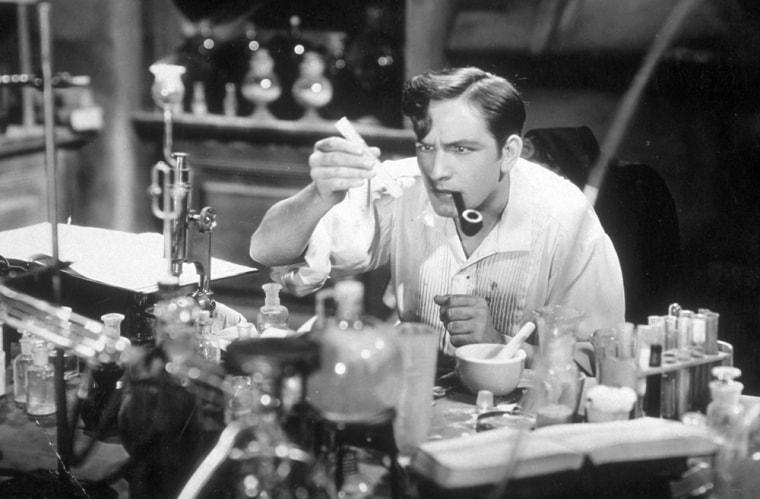Long time readers of this column may recall that when it comes to Valentine’s Day, I cast my lot with that titan of the gold neck chain, Penthouse magazine founder Bob Guccione. During an interview a few years ago he explained his hatred of the ersatz holiday.
Guccione thought we had forgotten how to engender feelings of romantic love through many small acts of daily devotion and a lusty sex life. To make up for laziness, we obligated ourselves to observe one day during which we toss money at greeting card companies, florists, chocolatiers and restaurants that serve crab-stuffed lobster. Guccione wanted us to chuck all that and return to romantic roots.
I agree with Guccione, but I am also chastened by a recent conversation with behavioral scientist Larry Young.
Last month, Young, a researcher at the Yerkes National Primate Research Center at Emory University in Atlanta, made news with a speculative essay in the science journal Nature. Young, who studies the neurochemistry of social interactions and bonding, wrote that “drugs that manipulate brain systems at whim to enhance or diminish our love for another may not be far away.”
Imagine that: A pill, spray or shot that could make you fall in or out of love with someone.
The reaction to the essay surprised him. Young was deluged with requests asking to participate in any clinical trial he might be running (he doesn’t do trials). Others decried a dystopian future of chemically-induced love. “When I wrote it, I did not think anyone would see it,” Young told me. “It’s just my thoughts about what science can tell us about emotions.”
But the response from newspaper reports and blogs made Young realize how the subject of love “touches everyone’s heart. When a scientist starts speculating about the biochemistry of love, breaking it down to a series of chemical events, (people) think we are trying to take away something magical.”
Even Young’s wife, a neuroscientist herself, gets annoyed when he talks about inducing love through chemistry. “My wife tells me, ‘You need to think about things like flowers and kisses and cleaning up after yourself!’ She says that if I’m not giving her flowers, I am not activating the full neural circuitry.”
Although Young was speculating in his essay — his real work is aimed more at conditions like autism, not making people fall in love — his words about a love potion aren’t just pulled from the air.
The hormones vasopressin and oxytocin loom large in his studies. Both greatly influence how animals mate and bond. For example, a female prairie vole will become attached to the nearest male if her brain gets a surge of oxytocin, a feel-good hormone that affects the same reward circuitry as cocaine and heroin. In male prairie voles, vasopressin switches on the vole equivalent of giving up your cushy job in Miami to be closer to a woman in Manitoba, getting into bar fights when some guy looks at her, and coaching all of junior’s hockey games like the doting father you have become.
Skeptics point out that voles aren’t people, which is true enough, but last September, Swedish researchers released a study showing that human males have variations in one vasopressin-related gene. Men with one variation predicted to increase bonding actually married at a higher rate and had happier marriages than men with a variation that tended to make them lone wolves.
Strengthening bonds through sex
Humans are the rare animals who have sex even when females are not fertile. So why do we do it? Stimulation of the vaginal/cervical area, Young said, causes release of oxytocin. “Our penises are huge compared with gorillas and chimpanzees,” he said (take that, Cheeta!), “and so maybe they are designed to cause oxytocin release.”
Human females have full breasts even when they aren’t nursing and human men are “obsessed” with them, Young said. Our penchant for licking nipples and twisting them like radio dials also stimulate oxytocin release, possibly harkening back to the mechanism of mothers and children bonding through nursing. In other words, sex is how we maintain and strengthen our bonds to each other.
Oxytocin and vasopressin are already sold as drugs with a variety of uses. However, neither will necessarily work as any kind of “love drug,” according to Young, although that hasn’t stopped some people from trying to get oxytocin for use on dates. But the scientific knowledge that could lead to such drugs is building.
Don’t wait. A drug to create true love might be 100 years away, Young said. Even then, its workings would be moderated by culture and environment. However, much sooner we could have drugs that might help couples in therapy to “open your mind to the other person, make you connect to the other person.”
But would drug-aided love be “real”? We may not like the idea that chemicals in our heads give us emotions, but they do. If love came in the form of a pill, it would be as real as love stimulated by sipping Veuve Clicquot over a fancy dinner.
“All those things do is generate the release of the same chemicals in the brain,” Young said.
Such talk may be why Young’s wife laughs out loud when she hears her husband referred to as “the love doctor.”
“She says we don’t have enough romance, so I am constantly trying to upgrade,” Young said.
Which is why, this weekend, Larry Young will bow to the inevitable. “I am buying flowers this Valentine’s Day and taking her out on a nice date.”
Brian Alexander is the author of the book now in paperback.
